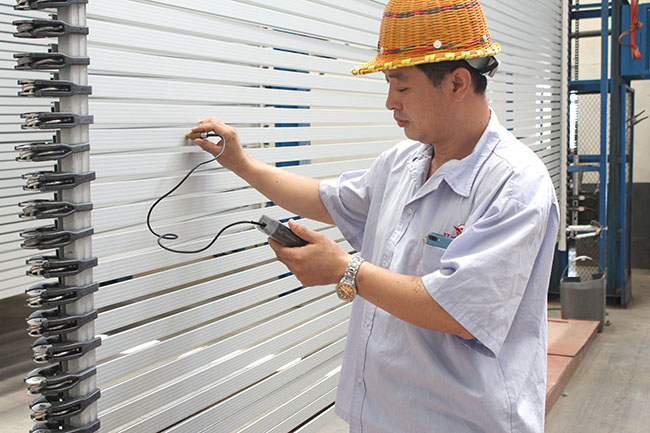
Eddy current thickness gauge is a convenient and compact instrument used to measure the thickness of insulating coating on non-magnetic metal substrate. It is widely used to measure the thickness of anodic oxide film or coating on the surface of aluminum alloy profile. ED400 eddy current thickness gauge is the third generation product of our company. Its quality and test accuracy have reached a very ideal level, but some users still use it improperly. The following explains the common use problems to help you better use this instrument.
The measuring accuracy of this instrument is 0.5 μ m~1 μ M if the measured coating thickness is less than 5 μ m. The average value of several measurements shall be taken as the measurement result. For less than 3 μ M coating can not accurately measure the thickness.
Each instrument has a critical thickness value of the base metal. If it is greater than this thickness, the measurement accuracy will not be affected by the base metal thickness, but if it is less than this thickness, the accuracy of the instrument will not be guaranteed. The critical value of the base metal thickness of this instrument is 0.3 ~ 0.4mm.
When the measuring diameter of this instrument is less than 150mm or the width of the sample is less than 12mm, the uncoated material with the same shape shall be used as the matrix for re calibration and measurement.
If the metal substrate surface of the measuring part is rough, it is best to select the average value of multiple measurements at multiple points.
During instrument measurement, the probe shall be in close contact with the surface of the sample. If there is dust and dirt on the front end of the probe or the surface of the tested part, it will affect the measurement results. Therefore, the cleanliness of the front end of the deep head and the surface of the sample shall be maintained during measurement.
The change of temperature will affect the parameters of the probe. Therefore, the instrument should be calibrated at approximately the same temperature as the operating environment.
